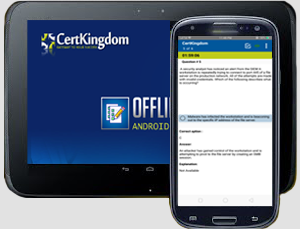Exam: JN0-460

|
|||||||||||||||||||||||||||
Exam Details
Exam questions are derived from the recommended training and the exam
resources listed above. Pass/fail status is available immediately after taking
the exam. The exam is only provided in English.
Exam Code JN0-460
Prerequisite Certification JNCIA-MistAI
Delivered by Pearson VUE
Exam Length 90 minutes
Exam Type 65 multiple-choice questions
Recertification
Juniper certifications are valid for three years. For more information, see
Recertification.
The Mist AI track enables you to demonstrate a thorough understanding of general
Mist AI features and functionality. JNCIS-MistAI-Wired, a specialist-level
certification in this track, is designed for wired LAN networking professionals
with intermediate knowledge of wired networking using the Mist AI. The written
exam for the certification verifies your intermediate understanding of wired
networking and Mist AI technology, features, and functionality.
Exam Preparation
We recommend the following resources to help you prepare for your exam.
However, these resources aren't required, and using them doesn't guarantee
you'll pass the exam.
Recommended Training
Deploying and Managing Juniper Wired Networks for Campus and Branch with
Mist AI
Exam Resources
Industry/product knowledge
Juniper TechLibrary
Additional Preparation
Juniper Learning Portal
Exam Objectives
Heres a high-level view of the skillset required to successfully complete
the JNCIS-MistAI-Wired certification exam.
Wired Assurance Fundamentals
Identify the concepts or functionality of Wired Assurance fundamentals.
Solutions
Supported devices
Features and components
MistAI accounts
Subscriptions
Wired Assurance Provisioning or Deployment
Identify the concepts of the provisioning or deploying wired assurance.
Provisioning process
Provisioning options
Deployment options
Configuration options
Templates
Supported architectures
Site variables
Describe how to provision or deploy wired assurance.
Wired Assurance Management or Operations
Identify the concepts or functionality of wired assurance management or
operations.
Managing switches
Port profiles
Dynamic port configuration
Service level expectations
Client insights
APIs
Describe how to manage or operate devices using MistAI wired assurance.
Campus Fabric Architecture
Identify the concepts of Campus Fabric Architectures
EVPN multihoming
Campus Fabric Core-Distribution
Campus Fabric IP Clos
GPB and Micro segmentation
CRB versus ERB
Scaling requirements
Describe how to deploy Campus Fabric Architectures.
Campus EVPN-VXLAN
Identify the concepts or functionality of VXLAN
Layer 2 tunneling
Data and control plane operations
VTEP functions
VXLAN gateways
Identify the concepts or functionality of EVPN
Multipath
Route types
Ethernet Segment Identifiers
Route distinguishers
Route targets
Policies
Data and control plane operations
MAC learning
JN0-460 Brain Dumps Exam + Online / Offline and Android Testing Engine & 4500+ other exams included
$50 - $25 (you save $25)
Buy Now
QUESTION 1
Which statement is correct about a 3-stage campus fabric IP Clos?
A. The distribution layer is connected to the access layer.
B. The distribution layer is connected to the core layer.
C. The core layer is connected to the access layer.
D. The core layer devices are connected to each other.
Answer: C
Explanation:
Junipers official Campus Fabric IP Clos design for Mist Wired Assurance defines
that the 3-stage IP
Clos topology eliminates the traditional distribution layer entirely. This
architecture is intended for
smaller campus environments that do not need an intermediate distribution layer
between the access and core.
oeJunipers Wired Assurance supports 3-Stage and 5-Stage IP Clos deployments. The
3-Stage IP Clos is
targeted towards deployments that do not require a Distribution Layer and have
smaller scale requirements.
Because the distribution layer is not present, the only hierarchical connection
in a 3-stage campus
fabric is between the core and access layers. Traffic is routed directly at the
access layer, and each
access switch acts as a Layer-3 gateway (IRB) for its VLANs.
oeIn a campus fabric IP Clos architecture, Mist provisions Layer-3 (L3)
integrated routing and bridging
(IRB) interfaces on the access layer. All the access switches are configured
with the same IP address for each L3 subnet.
Additionally, the Juniper documentation explains that point-to-point links are
configured between
layers, and in the case of the 3-stage design (with no distribution), this means
between the core and access devices:
oeThe point-to-point links between each layer utilize addressing to conserve
addresses.
Therefore, the correct statement is C: The core layer is connected to the access
layer.
Options A and B incorrectly mention a distribution layer that does not exist in
this topology.
Option D is incorrect because core (spine) devices in a Clos fabric are not
interconnected with each other.
Reference:
Juniper Mist AI for Wired Campus Fabric IP Clos Architecture Guide
Juniper Mist AI for Wired Campus Fabric IP Clos Workflow
Juniper Mist AI for Wired Configure Campus Fabric IP Clos
Juniper Validated Design Campus Fabric IP Clos Deployment Types
QUESTION 2
Which three steps should be part of the campus fabric deployment? (Choose
three.)
A. Define the physical connections.
B. Define the networks of interest.
C. Configure the DNS server.
D. Choose the topology.
E. Configure the group-based policy (GBP) tag.
Answer: A, B, D
Explanation:
According to the Juniper Mist AI for Wired Campus Fabric IP Clos Deployment
Workflow, deploying
a campus fabric involves a defined sequence of planning and configuration steps
within the Mist
Cloud interface. The key stages include:
oeTo deploy a campus fabric, you must first define the topology type, identify
the physical connections
between devices, and define the networks of interest that will be extended
across the fabric.
Breaking this down:
Choose the topology (D): Selecting the correct fabric type (3-Stage or 5-Stage
IP Clos) determines
how access, distribution, and core switches will interconnect.
Define the physical connections (A): This step involves specifying the uplink
and downlink
relationships between switches so that Mist can auto-generate EVPN-VXLAN and
routing
configurations.
Define the networks of interest (B): These are the VLANs and subnets that need
to be extended
across the fabric for user and device connectivity.
Steps such as configuring DNS servers or defining GBP tags are not part of the
campus fabric
deployment workflow in Mist Wired; they are optional or separate configurations
outside the main
deployment flow.
Reference:
Juniper Mist AI for Wired Campus Fabric IP Clos Deployment Workflow
Juniper Mist AI for Wired Configure Campus Fabric IP Clos
Juniper Validated Design Campus Fabric Overview
===========
QUESTION 3
What is the primary benefit of using switch configuration templates?
A. They improve the performance of switches.
B. They reduce Junos OS upgrade times.
C. They make it easier to make switch-specific configuration changes.
D. They provide a consistent configuration for all switches in an organization.
Answer: D
Explanation:
In Juniper Mist AI for Wired, configuration templates are a foundational part of
switch onboarding
and management. The primary purpose of these templates is to ensure
configuration consistency
across all switches that belong to a specific site or organization.
oeSwitch configuration templates allow administrators to define a standard
configuration that is
automatically applied to all switches within a site or organization, ensuring
consistency and reducing
configuration errors.
Templates can contain base configuration parameters such as NTP, syslog, VLANs,
port profiles, and
authentication settings. When new switches are onboarded to the Mist Cloud, they
automatically
inherit the templates configuration, ensuring uniform behavior across the
network fabric.
Option A is incorrect templates do not directly impact hardware performance.
Option B is incorrect templates are not related to upgrade times.
Option C is incorrect templates are used for uniformity, not for
switch-specific changes.
Option D correctly describes their main benefit ensuring consistent
configuration across all switches.
Reference:
Juniper Mist AI for Wired Switch Configuration Templates Guide
Juniper Mist AI for Wired Wired Assurance Administration Guide
Juniper Validated Design Mist Wired Configuration Best Practices
QUESTION 4
Referring to the exhibit, what is the purpose of the Save button in the
upper-right corner of the Mist dashboard?
A. It generates a backup of the current port configuration.
B. It resets the port configuration to its default settings.
C. It previews the impact of the port configuration changes before applying
them.
D. It applies the port configuration changes to the switch.
Answer: D
Explanation:
In the Juniper Mist AI for Wired dashboard, administrators can select one or
more switch ports (as
shown in the exhibit, e.g., port ge-0/0 on an EX4100-48MP). Once configuration
changes are
made such as VLAN assignment, port profiles, PoE settings, or administrative
state the Save
button must be clicked to confirm and apply those changes to the device.
oeWhen making configuration changes in the Mist switch interface, the Save
button must be used to
confirm the modifications. Clicking Save applies the selected port settings to
the switch through Mist Cloud.
Option A is incorrect: saving does not create a backup. Backups and snapshots
are handled through
Mists configuration archive, not via the Save button.
Option B is incorrect: Save does not reset configuration; instead, it commits
changes.
Option C is incorrect: there is no preview function tied to Save.
Option D is correct: the Save button is explicitly for applying configuration
changes to the selected
switch or port(s).
Reference:
Juniper Mist AI for Wired Switch Port Configuration Guide
Juniper Mist AI for Wired Wired Assurance Administration Guide
Juniper Mist Documentation Managing Switch Interfaces
QUESTION 5
You have two sites connected to an EVPN network. Each site is using the
172.16.1.0 network for its own respective site.
How does EVPN prevent overlap in this scenario?
A. It elects a designated forwarder.
B. It uses a Layer 2 gateway.
C. It uses a route distinguisher.
D. It uses an Ethernet segment identifier (ESI).
Answer: C
Explanation:
EVPN, when used with VXLAN, leverages BGP MPLS/VXLAN control plane mechanisms.
To prevent
overlapping IP prefixes between different tenants or sites, EVPN uses a Route
Distinguisher (RD).
oeIn EVPN-VXLAN, the route distinguisher (RD) makes routes unique when
overlapping IP prefixes or
MAC addresses are advertised between multiple tenants or sites.
logged members Can Post comments / review and take part in Discussion
Certkingdom Offline Testing Engine Simulator Download
Prepare with yourself how CertKingdom Offline Exam Simulator it is designed specifically for any exam preparation. It allows you to create, edit, and take practice tests in an environment very similar to an actual exam.
Supported Platforms: Windows-7 64bit or later - EULA | How to Install?
FAQ's: Windows-8 / Windows 10 if you face any issue kinldy uninstall and reinstall the Simulator again.
Download Offline Simulator-Beta
Certkingdom Testing Engine Features
- Certkingdom Testing Engine simulates the real exam environment.
- Interactive Testing Engine Included
- Live Web App Testing Engine
- Offline Downloadable Desktop App Testing Engine
- Testing Engine App for Android
- Testing Engine App for iPhone
- Testing Engine App for iPad
- Working with the Certkingdom Testing Engine is just like taking the real tests, except we also give you the correct answers.
- More importantly, we also give you detailed explanations to ensure you fully understand how and why the answers are correct.
Certkingdom Android Testing Engine Simulator Download
Take your learning mobile android device with all the features as desktop offline testing engine. All android devices are supported.
Supported Platforms: All Android OS EULA
Install the Android Testing Engine from google play store and download the app.ck from certkingdom website android testing engine download

Certkingdom Android Testing Engine Features
- CertKingdom Offline Android Testing Engine
- Make sure to enable Root check in Playstore
- Live Realistic practice tests
- Live Virtual test environment
- Live Practice test environment
- Mark unanswered Q&A
- Free Updates
- Save your tests results
- Re-examine the unanswered Q & A
- Make your own test scenario (settings)
- Just like the real tests: multiple choice questions
- Updated regularly, always current




